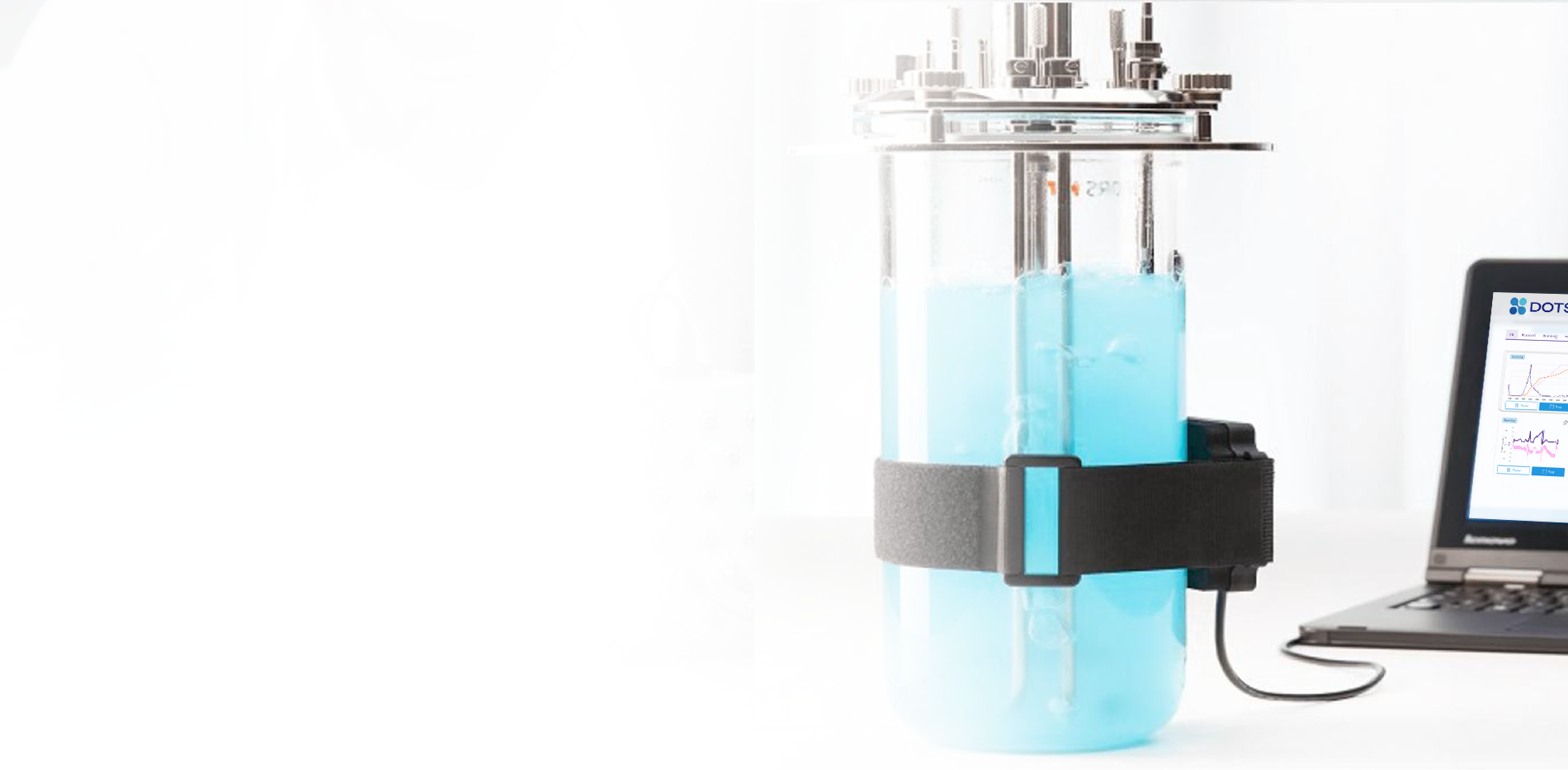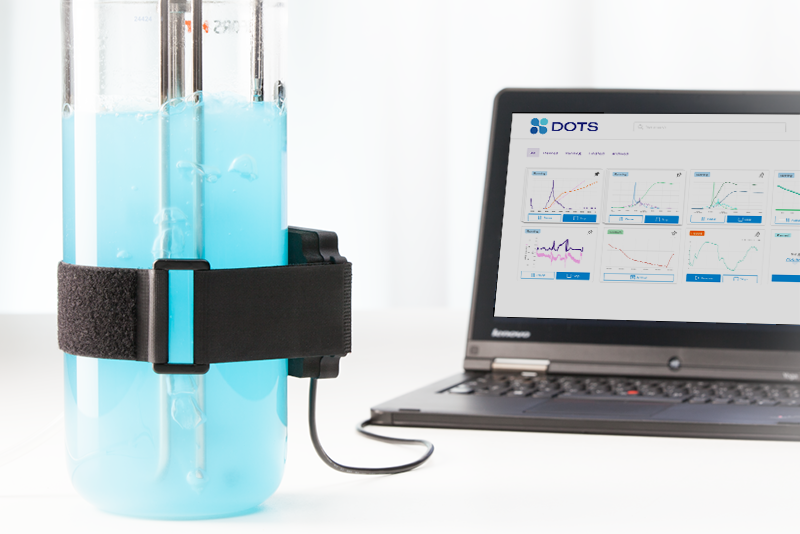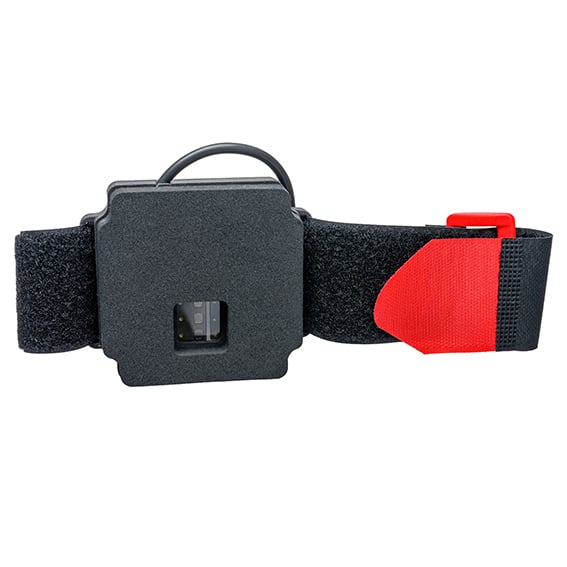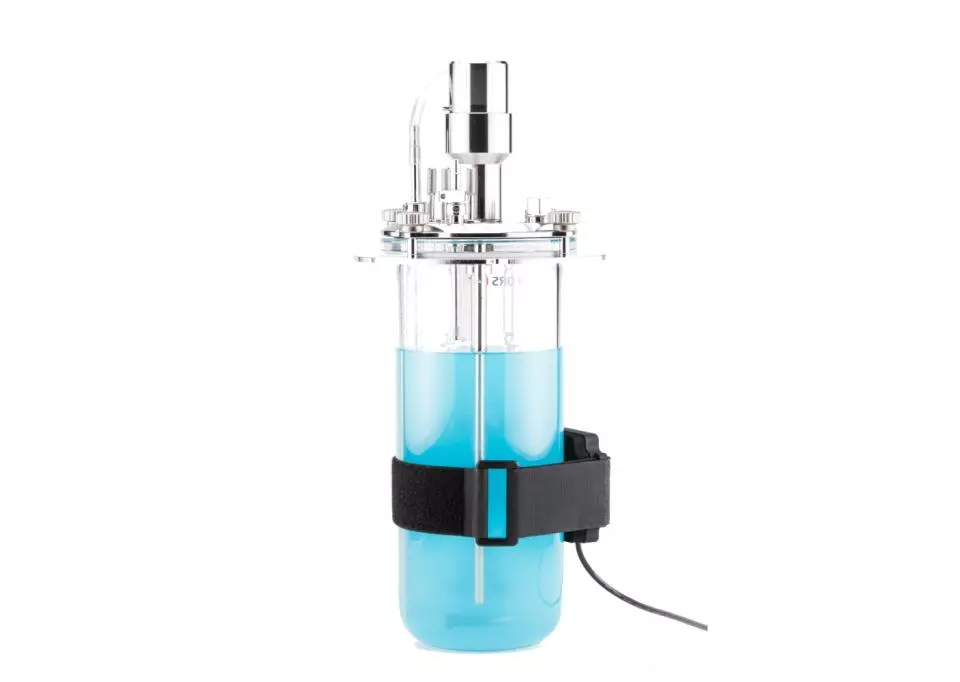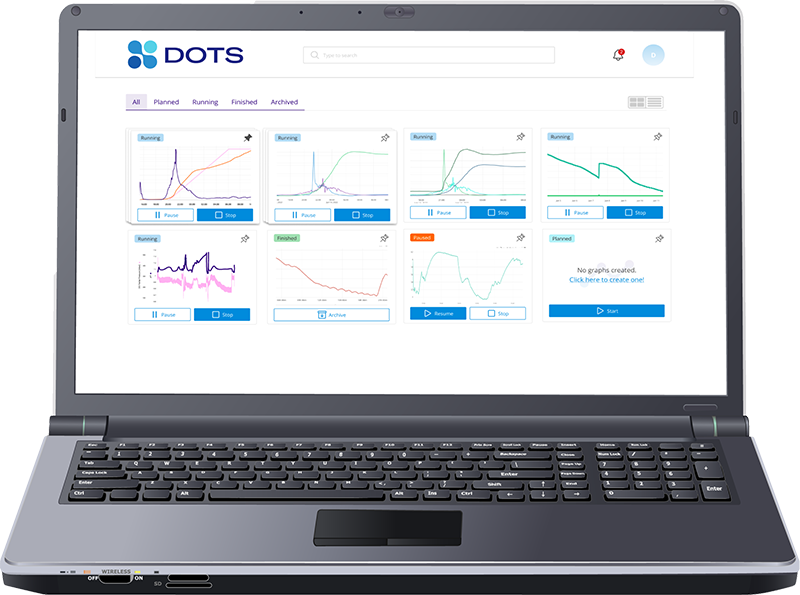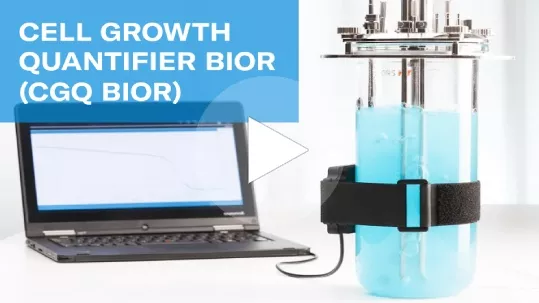Overview
Monitor biomass and growth rates in your bioreactors with high-resolution growth curves using the CGQ BioR. Optical biomass measurements are based on backscattered light detection without the use of invasive sensors. Simply mount the sensor plate to the outside of your reactor and monitor the biomass through the vessel wall. Follow the growth of your cultures in real-time to gain actionable insights into your strain’s growth behavior.
- Save time with automated, online, non-invasive biomass monitoring in several bioreactors in parallel
- Two measurement modes for high and low biomass concentrations
- No cleaning or sterilization required
- Free up reactor port space
- Flexible integration of biomass data into other software (e.g., analog, OPC…)
- Gain actionable insights with high resolution growth curves
- Powerful DOTS Software for easy sensor handling and real-time data visualization
What Our Customers Are Saying
-Dipl. Ing. Andreas Hoffmann (TU Dresden)

-Winda Soerjawinata (Hochschule Trier)
.png)
How It Works
The BioR’s technique for non-invasive cell density monitoring is based on the principle of light backscattering.
Using LEDs and photodiodes, the BioR sensor emits light through the wall of the vessel and measures the amount of light that is scattered back to the photodiode, resulting in a higher measured intensity. The more cells that are in the medium, the more light is scattered back. This backscatter signal can be correlated with offline cell density data, such as OD600 or cell dry weight (CDW).
CGQ BioR Sensing
Architecture
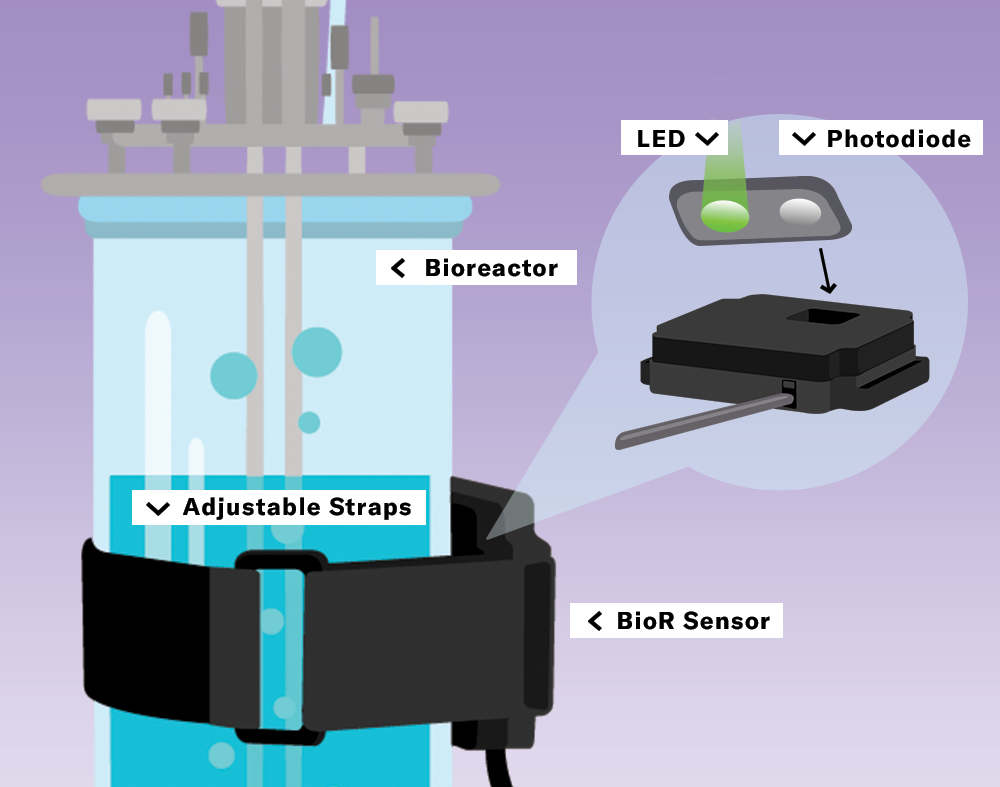
The sensor of the CGQ BioR contains two LEDs with different wavelengths and a photodiode. Choosing between two LEDs allows selecting the optimal wavelength for precise measurements at both, low and high cell densities.
Biomass Monitoring by Backscattered Light
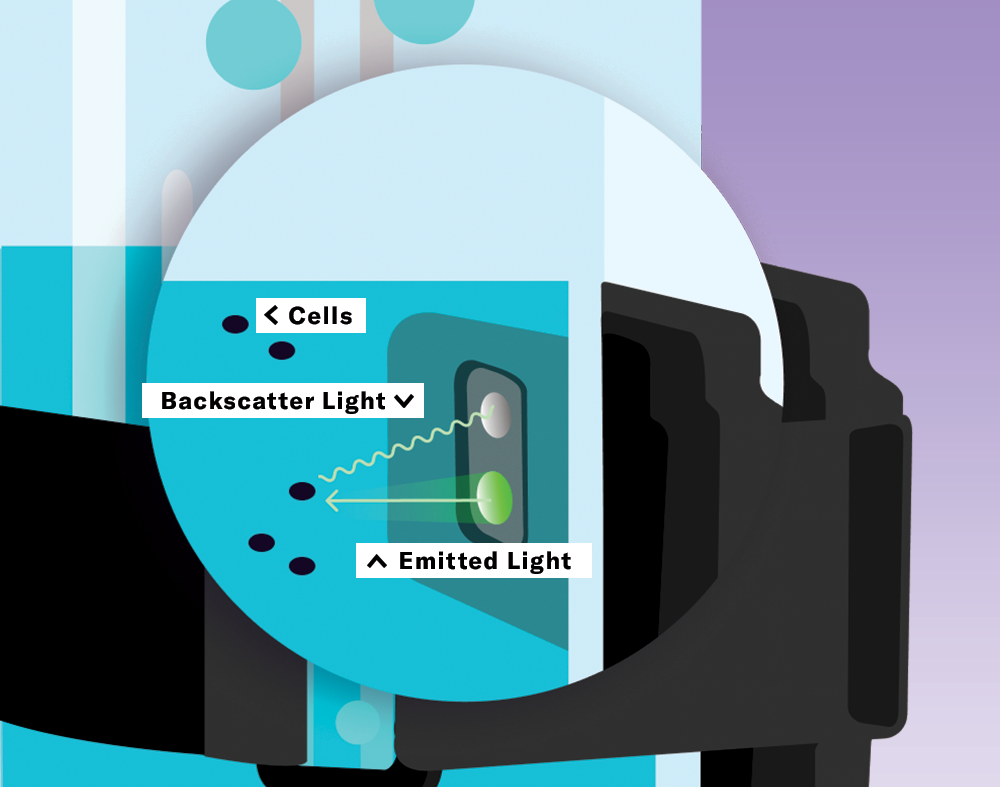
Light is emitted from the LEDs into the culture medium. While most photons go straight through the broth, some are scattered back by the cells and return to the photodiode, which measures the scattered light intensity. The higher the cell density, the more light is scattered back to the photodiode.
Application Data & Results
Explore applications in real-world situations. Looking for something specific? Contact us to see data for your organism and application.
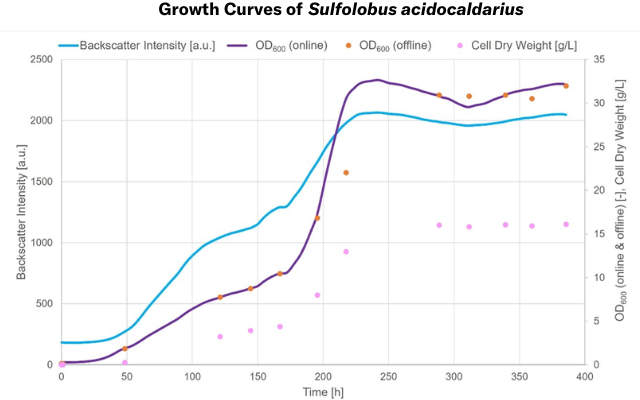
Sulfolobus acidocaldarius, 3L bioreactor, 75 °C, 400 hours
Works With Unique Organisms (Thermophilic, Filamentous, Anaerobic, and More)
Backscattered light readings with the CGQ BioR provide reliable data even under severe conditions, and correlates well with Cell Dry Weight (CDW) and OD600. Read the case study →
Want to see data for your organism or application?
We have tested over 100 microorganisms for more than 50 different applications with our technology.
Hardware & Software Components
BioR Sensor
Each sensor is positioned outside of the bioreactor, measuring the biomass through the vessel wall.
BioR Hub
Several sensors can be connected to a single hub. The BioR hub bundles the data from all monitored bioreactors and sends it to the DOTS Software.
DOTS Software
The DOTS Software receives the data from the hub and visualizes backscattered light intensities in real-time, providing high-resolution growth curves.
From Estimation to Information
Why CGQ BioR for your Bioreactors?
Manual sampling-based data is often not sufficient to fully understand the bioprocess. Offline sampling is cumbersome and time-consuming, resulting in lower measurement frequency with most pulls being at the start or the end of the experiment. This means that critical information from your growth phases are being overlooked which could have a detrimental impact on your final product. Automated online measurements, on the other hand, never miss a moment. With high-resolution, real-time growth curves, you can detect bioprocess changes on the spot.

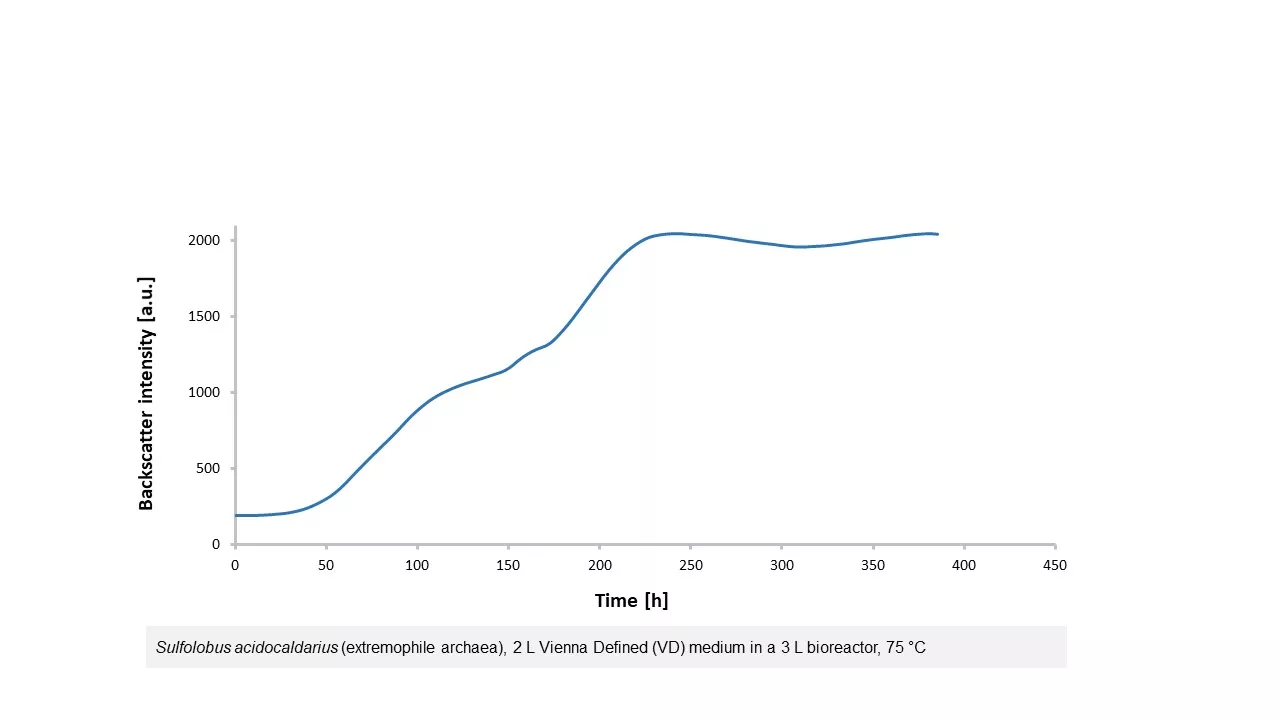
Specifications
Compatible Laboratory Infrastructure
The CGQ BioR is compatible with a variety of bioreactors. Different sized attachment straps provide maximum flexibility, allowing the same sensor to be used with different bioreactor sizes and manufacturers.
For different reactor types:
- Single-jacket
- Double-jacket
For different reactor sizes:
- Mini bioreactor systems
- Benchtop bioreactors
- Production scale
Compatible Organisms
Bacteria
- Escherichia coli
- Corynebacterium glutamicum
- Bacillus subtilis
- Pseudomonas putida
- Pseudomonas taiwanensis
- Gluconobacter oxydans
- Lactobacillus plantarum
- Vibrio natriegens
- Vibrio cholerae
- Staphylococcus aureus
- Klebsiella pneumoniae
- Actinobacillus pleuropneumoniae
- Chromobacterium violaceum
- Blautia producta
- Hungtatella hathewayi
- Prevotella copri
Yeast
- Saccharomyces cerevisiae
- Schizosaccharomyces pombe
- Pichia pastoris
- Yarrowia lipolytica
- Kluyveromyces lactis
- Hansenula polymorpha
- Ustilago maydis
Filamentous organisms
- Aspergillus fumigatus
- Aspergillus nidulans
- Aspergillus niger
- Streptomyces acidiscabies
- Streptomyces venezuelae
- Trichoderma reesei
Archaea
-
Haloferax volcanii
-
Sulfolobus acidocaldarius
Anaerobic organisms
-
Acetobacterium woodii
-
Clostridium aectobutylicum
-
Clostridium ljungdahlii
-
Clostridium difficile
Phototrophic organisms
-
Chlorella vulgaris
-
Scenedesmus obliquus
-
Synechococcus elongatus
-
Nicotiana tabacum BY-2 (plant cells)
Compatible Laboratory Infrastructure
The CGQ BioR is compatible with a variety of bioreactors. Different sized attachment straps provide maximum flexibility, allowing the same sensor to be used with different bioreactor sizes and manufacturers.
For different reactor types:
- Single-jacket
- Double-jacket
For different reactor sizes:
- Mini bioreactor systems
- Benchtop bioreactors
- Production scale
Compatible Organisms
Bacteria
- Escherichia coli
- Corynebacterium glutamicum
- Bacillus subtilis
- Pseudomonas putida
- Pseudomonas taiwanensis
- Gluconobacter oxydans
- Lactobacillus plantarum
- Vibrio natriegens
- Vibrio cholerae
- Staphylococcus aureus
- Klebsiella pneumoniae
- Actinobacillus pleuropneumoniae
- Chromobacterium violaceum
- Blautia producta
- Hungtatella hathewayi
- Prevotella copri
Yeast
- Saccharomyces cerevisiae
- Schizosaccharomyces pombe
- Pichia pastoris
- Yarrowia lipolytica
- Kluyveromyces lactis
- Hansenula polymorpha
- Ustilago maydis
Filamentous organisms
- Aspergillus fumigatus
- Aspergillus nidulans
- Aspergillus niger
- Streptomyces acidiscabies
- Streptomyces venezuelae
- Trichoderma reesei
Archaea
-
Haloferax volcanii
-
Sulfolobus acidocaldarius
Anaerobic organisms
-
Acetobacterium woodii
-
Clostridium aectobutylicum
-
Clostridium ljungdahlii
-
Clostridium difficile
Phototrophic organisms
-
Chlorella vulgaris
-
Scenedesmus obliquus
-
Synechococcus elongatus
-
Nicotiana tabacum BY-2 (plant cells)
Customer Success Stories
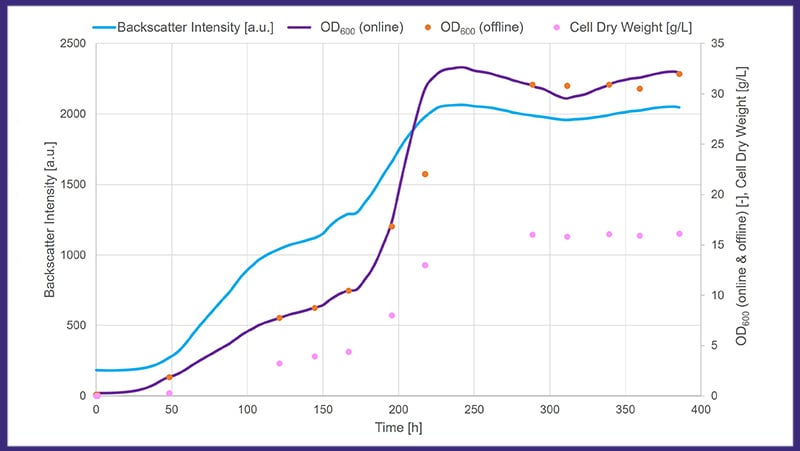
USING THE CGQ BIOR FOR THERMOPHILIC ORGANISMS
"The prolonged exposure to high temperatures was unproblematic for the CGQ BioR. Even after 400 hours of cultivation, the biomass data from the CGQ BioR was highly reliable and correlated well with OD600 and cell dry weight values. The CGQ BioR therefore seems well suited for monitoring biomass of cultivations with thermophilic organisms that require high temperatures and long fermentation times."
- Dipl. Ing. Robert Klausser, Integrated Bioprocess Development, TU Wien

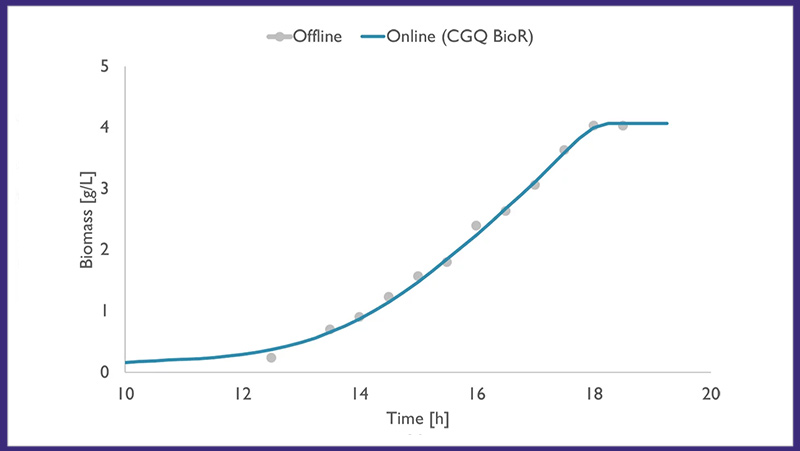
Using The CGQ Bior To Monitor K. Marxianus During The Production Of Ethyl Acetate
Yeasts ferment to produce ethyl acetate (EA), a widely used solvent. In this experiment, Kluyveromyces marxianus was cultivated in a synthetic medium and the CGQ BioR was used to calculate biomass-specific EA synthesis rates to identify optimal production stages.

